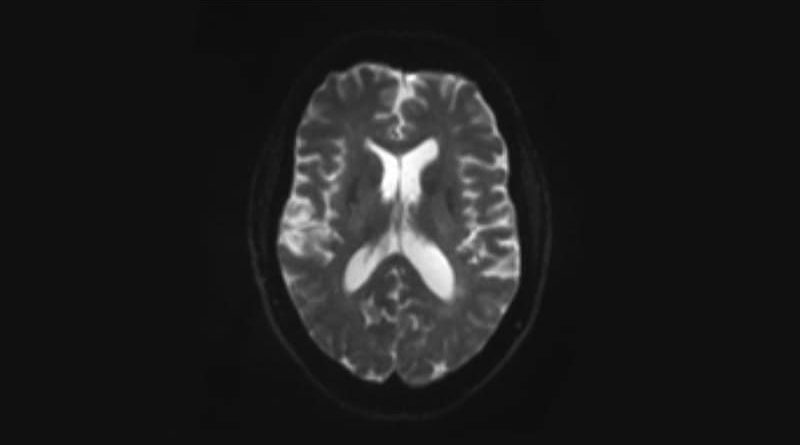Researchers Develop Potential Biomarker for Cerebrovascular Aging
The study covered in this summary was published on medRxiv.org as a preprint and has not yet been peer reviewed.
Key Takeaway(s)
-
Authors developed a deep-learning model to estimate white matter brain age based on MRI studies of the brain using diffusion weighted imaging (DWI).
-
White matter brain age gap (WMBAG), ie, the difference between white matter brain age and chronological age, was significantly associated with cerebrovascular risk factors.
-
Hypertension and diabetes were both associated with cognitive decline, particularly decreased executive function and slower processing speed.
Why This Matters
-
Most prior studies of brain age have not distinguished between white matter and gray matter, although white matter is more vulnerable to ischemia because of its limited arteriolar supply.
-
WMBAG could potentially serve as a neuroimaging biomarker of the cerebrovascular aging process of an individual.
Study Design
-
Participants included 37,229 individuals with an interpretable DWI study in the UK Biobank, including 3399 with self-reported brain disorders and 33,830 healthy subjects. A training cohort (60% of healthy subjects), validation cohort (20% of healthy subjects), and testing cohort (20% of healthy subjects and those with self-reported brain disorder) were identified. DWI studies were from three imaging centers in the UK. White matter brain age was estimated based on DWI studies using a three-dimensional convolutional neural network deep-learning model.
-
A vascular risk score (0, 1, 2, or 3+) was assigned to each participant based on presence or absence of hypertension, diabetes, hypercholesterolemia, obesity, and smoking. APOE genotype (the major genetic risk factor for Alzheimer’s disease) was determined for each participant. Seven neuropsychological tests assessed cognitive function, including three for processing speed, two for memory, and two for executive function. Global cognitive function was derived from all seven tests.
-
In the 1409 patients with both baseline and follow-up DWI scans (mean 2.25 years of follow-up), investigators assessed outcomes longitudinally over time.
Key Results
-
A deep-learning model was used to estimate white matter brain age based on DWI studies. White matter brain age and chronological age showed a clear correlation, with a Pearson’s correlation coefficient of 0.902. Mean absolute error was 2.84 years.
-
Vascular risk score was significantly correlated with greater WMBAG. Participants with no vascular risk factors had a mean WMBAG of -0.56, suggesting they had a white matter brain age half a year younger on average than their chronological age. Participants with one, two, or three or more vascular risk factors had mean WMBAG of -0.02, 0.64, and 1.29, respectively. Diabetes had the strongest association with increased WMBAG. In males but not females, obesity was associated with significantly greater WMBAG. Males, but not females, with three or more risk factors had significantly greater WMBAG.
-
After Bonferroni correction, baseline WMBAG was significantly associated with processing speed, executive function, and global cognition. Hypertension, diabetes, and smoking were all associated with reduced processing speed and decreased executive function mediated through WMBAG.
-
In the longitudinal study, no significant association between change in WMBAG and vascular risk factors or cognitive status was found.
Limitations
-
The vascular risk factor score was based solely on the number of risk factors.
-
The mean follow-up interval of 2.25 years might be too short to reveal significant changes in brain structure or cognition.
-
Cerebrovascular and neurodegenerative pathologies can coexist in aging brains; differentiating between their effects on white and gray matter is difficult.
Disclosures
-
This study was supported by the National Health and Medical Research Council of Australia Program Grants ID350833, ID568969, ID1093083 and ID630593.
-
The National Computational Infrastructure, supported by the Australian Government, provided assistance with resources and services.
-
Jiyang Jiang, PhD, was supported by the John Holden Family Foundation. Ivor W. Tsang, PhD, and Yuangang Pan, PhD, BSc received support from the A*STAR Centre for Frontier AI Research.
This is a summary of a preprint research study, “White matter brain age as a biomarker of cerebrovascular burden in the ageing brain,” written by Jing Du, MD, from the University of New South Wales, Sydney, Australia and colleagues on MedRxiv.org, provided to you by Medscape. This study has not yet been peer reviewed. The full text of the study can be found on MedRxiv.org.
For more Medscape Neurology news, join us on Facebook and Twitter
Source: Read Full Article



